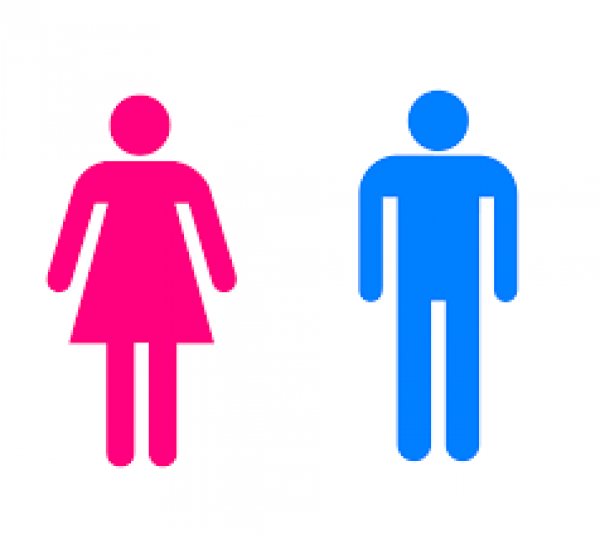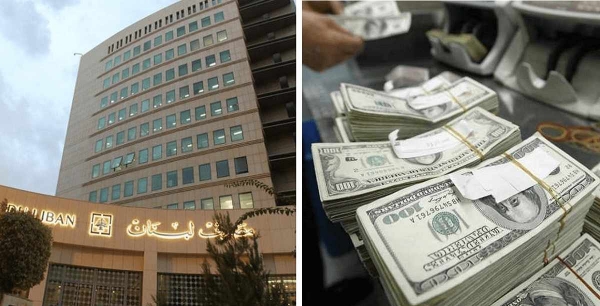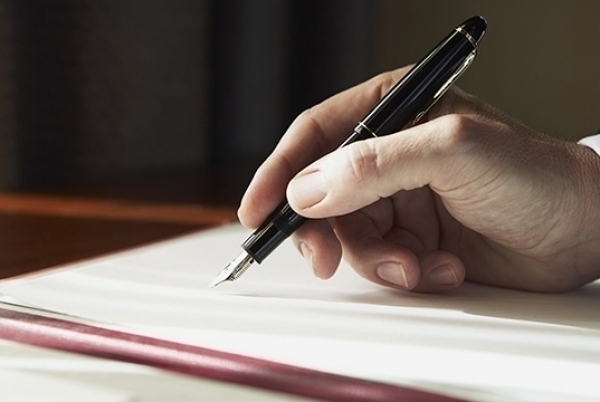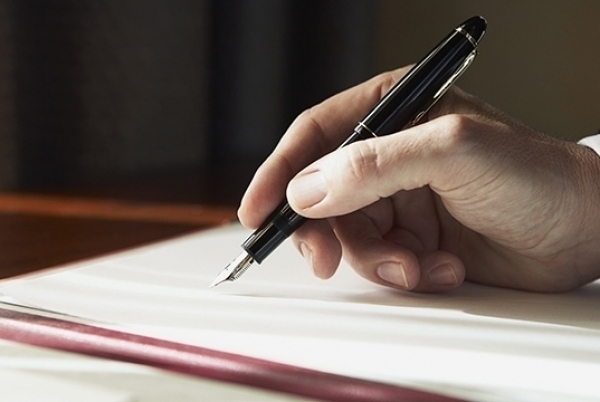The Women of Lebanon in Statistics-50% of the Population, 25% of the Labor Force and 3% of Politicians
Number of Females
Those Lebanese holding the Lebanese nationality totaled 5,135,338 in early 2015, divided equally between males and females.
2,564,372 females or 50%
2,570,966 females or 50%
The average annual number of births over the past five years (2010-2014) was 100,045 distributed as follows:
48,930 female births or 49%
51,115 male births or 51%
Contrary to common belief, the number of female births is slightly lower than that of male births.
The average annual number of deaths amounted to 24,968 over the past five years. They were distributed as follows:
11,363 female deaths or 45.5%
13,605 male deaths or 54.5%
According to these numbers, the Lebanese population increases annually by 75,077 people; 37,567 or 50% of whom are females and 37,510 or 50% are males.
Females in Schools
Students in pre-university education totaled 975,695 in the scholarly year 2012-2013. Among those, 488,659 were females accounting for roughly 50% of the student population. By type of school, females accounted for 53.3% of the student population in public schools, 48% in free private schools and 48.5% in fee-paying private schools.
Females in Universities
Females made up 54.4% of university students in the scholarly year 2012-2013, totaling 104,213 out of 191,788 students in higher education. This distribution varied by university. In the Lebanese University, female students constituted 66% of the total student population. This percentage drops down to 42.8% in Beirut Arab University and 38% in Notre Dame University. In the American University of Beirut, females accounted for 50.6% of the students, whereas they constituted 63.2% in the Université Saint Joseph.
“The participation of females in the labor market is still modest with women making up no more than 25% of the total labor force or 235,000 female employees out of an estimated 1,300,000 in total“
University graduates totaled 32,070, of whom 57.6% were females. Of the Lebanese university graduates alone, 71% were female. In the American University of Beirut and the Université Saint Joseph, females accounted for 51% and 67% respectively.
Females in the Labor Market
The participation of females in the labor market is still modest with women making up no more than 25% of the total labor force or 235,000 female employees out of an estimated 1,300,000 in total. This percentage has increased in recent years from 13% in 1970 and varies from one profession to another as follows:
Teaching: this profession has the largest portion of female workers. In 2013, female teachers totaled 72,380 accounting for 76.6% of the total number of teachers in pre-university education. This percentage increased from 71% in 2003 when the number of female teachers was 59,860.
In higher education, the number of female teachers amounted to 7,607 accounting for 37.8% of the total teaching force, up from 28.8% or 3,226 teachers in 2003.
Females in the Banking Sector
The percentage of women working in the banking industry has been increasing by the year and reached 45.9% in 2013 or 10,630 women out of 23,136 workers in total. In 1996, the percentage of female bank workers stood at 39% and increased to 42.7% in 2002. This upward curve signals that women will most likely constitute the majority of the banking employees in future.
Industrial Sector
In the absence of accurate data on the number of workers in the industrial sector, it is estimated that women make up 15% of the total industrial workforce.
Agricultural Sector
In the agricultural sector, women account for roughly 35% of the total agricultural workforce, a large part of which is family labor.
Engineers
Of the engineers registered with the Orders of Engineers in Beirut and Tripoli, females make up only 11%.
Physicians
Female physicians account currently for 27% of the total physicians of Lebanon, up from 12% in 1973.
Pharmacists
The number of females employed in pharmaceutical jobs has increased in recent years reaching 39% of the total labor force in the industry.
Lawyers
The percentage of female lawyers has been slightly increasing at the Bar Associations of Beirut and Tripoli, reaching 28% in 2013 up from 23% in 2003. It is noteworthy that lawyers in both bars totaled roughly 8,900.
Judiciary
The judiciary is one of the sectors that has seen a significant increase in the rates of female participation. From limited numbers in the past few decades, women have grown in recent years to make up 36% of the judiciary.
Grade 1 Posts
Currently, women employed in Grade 1 positions total 18 out of 160, i.e. roughly 11.2% (See Table 1).
“Women in Lebanon still have a long way to go in politics and their presence has been too limited in scope. Since independence, only 10 women were able to gain seats in Parliament“
Politics
Women in Lebanon still have a long way to go in politics and their presence has been too limited in scope. Since independence, only 10 women were able to gain seats in Parliament and some of them were able to do so only because they were married to or were daughters of, politicians. The first woman to ever become a Member of Parliament is Mirna Boustany who succeeded her father in 1963 and was not assigned any ministerial post until after 40 years from entering Parliament. Only seven women have been appointed ministers in modern history of Lebanon.
The present government (2015) has room for only one female minister out of 24, which accounts for 4.1% of the Cabinet. In Parliament though, there are four women out of 128 MPs or roughly 3.1%.
The seven women who assumed ministerial portfolios are:
- Omar Karami’s government under President Emile Lahoud in 2004 and 2005:
Layla Solh Hamadeh (Sunni): Minister of Industry
Wafaa Dikah Hamze (Shia’a): Minister of State
- Fouad Seniora’s government under President Emile Lahoud between 2005 and 2008:
Nayla Mouawad (Maronite): Minister of Social Affairs
- Fouad Seniora’s government under President Michel Suleiman between 2008 and 2011:
Bahiya Hariri (Sunni): Minister of Education and Higher Education
- Saad Hariri’s government under President Michel Suleiman between 2009 and 2011:
Rayya Haffar (Sunni): Minister of Finance
Mona Oufeish (Greek Orthodox): Minister of State
Females who made it to Parliament are:
Mirna Boustany (Maronite): she won a seat in the Shouf district during the 1963 by-elections
Maha Khoury Asaad (Maronite): she won a seat in the Jbeil district in the 1992 elections
Nouhad Souaid (Maronite): she won a seat in the Jbeil district in the 1996 elections
Nayla Mouawad (Maronite): she won a seat in the Zgharta district in the elections held in 1992, 1996, 2000 and 2005
Bahiya Hariri (Sunni): she won a seat in the Saida district in the elections held in 1992, 1996, 2000, 2005 and 2009
Ghinwa Jalloul (Sunni): she won a seat in the Beirut 3 district in 2000 and 2005
Gilbert Zouein (Maronite): she won a seat in the Kessrouan district in 2005 and 2009
Strida Geagea (Maronite): she won a seat in the Bsharri district in 2005 and 2009
Solange Gemayel (Maronite): she won a seat in the Beirut 1 district in 2005
Nayla Touweini (Greek Orthodox): she won a seat in the Beirut 1 district in 2009
“The participation of females in the labor market is still modest with women making up no more than 25% of the total labor force or 235,000 female employees out of an estimated 1,300,000 in total“
University graduates totaled 32,070, of whom 57.6% were females. Of the Lebanese university graduates alone, 71% were female. In the American University of Beirut and the Université Saint Joseph, females accounted for 51% and 67% respectively.
Females in the Labor Market
The participation of females in the labor market is still modest with women making up no more than 25% of the total labor force or 235,000 female employees out of an estimated 1,300,000 in total. This percentage has increased in recent years from 13% in 1970 and varies from one profession to another as follows:
Teaching: this profession has the largest portion of female workers. In 2013, female teachers totaled 72,380 accounting for 76.6% of the total number of teachers in pre-university education. This percentage increased from 71% in 2003 when the number of female teachers was 59,860.
In higher education, the number of female teachers amounted to 7,607 accounting for 37.8% of the total teaching force, up from 28.8% or 3,226 teachers in 2003.
Females in the Banking Sector
The percentage of women working in the banking industry has been increasing by the year and reached 45.9% in 2013 or 10,630 women out of 23,136 workers in total. In 1996, the percentage of female bank workers stood at 39% and increased to 42.7% in 2002. This upward curve signals that women will most likely constitute the majority of the banking employees in future.
Industrial Sector
In the absence of accurate data on the number of workers in the industrial sector, it is estimated that women make up 15% of the total industrial workforce.
Agricultural Sector
In the agricultural sector, women account for roughly 35% of the total agricultural workforce, a large part of which is family labor.
Engineers
Of the engineers registered with the Orders of Engineers in Beirut and Tripoli, females make up only 11%.
Physicians
Female physicians account currently for 27% of the total physicians of Lebanon, up from 12% in 1973.
Pharmacists
The number of females employed in pharmaceutical jobs has increased in recent years reaching 39% of the total labor force in the industry.
Lawyers
The percentage of female lawyers has been slightly increasing at the Bar Associations of Beirut and Tripoli, reaching 28% in 2013 up from 23% in 2003. It is noteworthy that lawyers in both bars totaled roughly 8,900.
Judiciary
The judiciary is one of the sectors that has seen a significant increase in the rates of female participation. From limited numbers in the past few decades, women have grown in recent years to make up 36% of the judiciary.
Grade 1 Posts
Currently, women employed in Grade 1 positions total 18 out of 160, i.e. roughly 11.2% (See Table 1).
“Women in Lebanon still have a long way to go in politics and their presence has been too limited in scope. Since independence, only 10 women were able to gain seats in Parliament“
Politics
Women in Lebanon still have a long way to go in politics and their presence has been too limited in scope. Since independence, only 10 women were able to gain seats in Parliament and some of them were able to do so only because they were married to or were daughters of, politicians. The first woman to ever become a Member of Parliament is Mirna Boustany who succeeded her father in 1963 and was not assigned any ministerial post until after 40 years from entering Parliament. Only seven women have been appointed ministers in modern history of Lebanon.
The present government (2015) has room for only one female minister out of 24, which accounts for 4.1% of the Cabinet. In Parliament though, there are four women out of 128 MPs or roughly 3.1%.
The seven women who assumed ministerial portfolios are:
- Omar Karami’s government under President Emile Lahoud in 2004 and 2005:
Layla Solh Hamadeh (Sunni): Minister of Industry
Wafaa Dikah Hamze (Shia’a): Minister of State
- Fouad Seniora’s government under President Emile Lahoud between 2005 and 2008:
Nayla Mouawad (Maronite): Minister of Social Affairs
- Fouad Seniora’s government under President Michel Suleiman between 2008 and 2011:
Bahiya Hariri (Sunni): Minister of Education and Higher Education
- Saad Hariri’s government under President Michel Suleiman between 2009 and 2011:
Rayya Haffar (Sunni): Minister of Finance
Mona Oufeish (Greek Orthodox): Minister of State
Females who made it to Parliament are:
Mirna Boustany (Maronite): she won a seat in the Shouf district during the 1963 by-elections
Maha Khoury Asaad (Maronite): she won a seat in the Jbeil district in the 1992 elections
Nouhad Souaid (Maronite): she won a seat in the Jbeil district in the 1996 elections
Nayla Mouawad (Maronite): she won a seat in the Zgharta district in the elections held in 1992, 1996, 2000 and 2005
Bahiya Hariri (Sunni): she won a seat in the Saida district in the elections held in 1992, 1996, 2000, 2005 and 2009
Ghinwa Jalloul (Sunni): she won a seat in the Beirut 3 district in 2000 and 2005
Gilbert Zouein (Maronite): she won a seat in the Kessrouan district in 2005 and 2009
Strida Geagea (Maronite): she won a seat in the Bsharri district in 2005 and 2009
Solange Gemayel (Maronite): she won a seat in the Beirut 1 district in 2005
Nayla Touweini (Greek Orthodox): she won a seat in the Beirut 1 district in 2009

شاهد الجدول كاملا








Leave A Comment